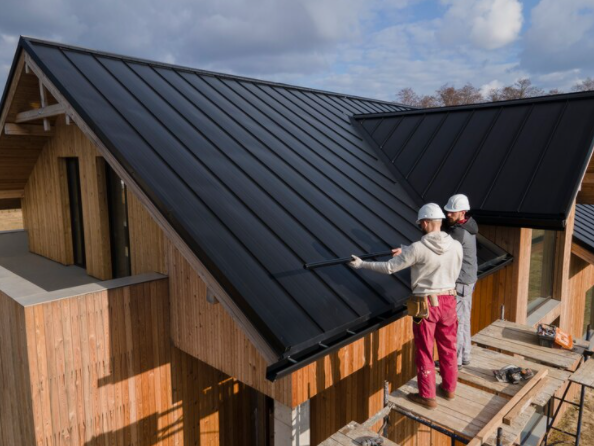Roof replacement is an intricate process that not only enhances the curb appeal of your home but also reinforces its protection against the elements. It is an investment that demands careful planning and execution. This article breaks down the journey of replacing your roof, from the initial assessment to the final touches.
Assessing the Need for a New RoofIdentifying Signs of Roof Deterioration
A roof nearing the end of its lifespan often shows clear indicators of wear. Look for missing or damaged shingles, frequent leaks, and granules in gutters. If these signs are evident, it may be time to consider a roof replacement.
Getting a Professional Evaluation
Before making any decisions, it’s wise to seek the expertise of a roofing professional. A thorough inspection can provide an accurate assessment of your roof’s condition and offer guidance on the next steps.
Choosing Materials and a Roofing ContractorSelecting Roofing Materials
The selection of materials is crucial in ensuring the longevity and performance of your new roof. Options range from asphalt shingles to metal, slate, and wood, each with varying durability, appearance, and cost profiles.
Partnering with the Right Contractor
Not all roofing contractors are created equal. Opt for one with strong credentials, a good track record, and positive reviews. A reliable contractor will be transparent about costs, timelines, and work specifics.
Planning and Preparing for Roof ReplacementUnderstanding the Replacement Timeline
The timeline for roof replacement can vary based on the size of the roof, type of materials, and weather conditions. To mitigate any inconvenience, a clear and realistic timeline should be established from the onset.
Preparing Your Home and Property
Prior to the commencement of work, it’s important to protect areas of your home and yard. Move vehicles, cover landscaping, and secure loose items to safeguard against falling debris.
Execution: The Roof Replacement ProcessRemoving the Old Roof
Roof replacement begins with the careful removal of the old roof. This involves stripping away shingles, underlayment, and any damaged decking to pave the way for the new roof.
Making Necessary Repairs
With the old roofing materials removed, it’s time to inspect and repair the roof decking. Any signs of rot or damage must be addressed to provide a solid foundation for the new roof.
Installing the New Roof
Once repairs are made, new underlayment is rolled out, followed by the installation of the chosen roofing material. Proper installation is critical for ensuring the roof’s integrity and longevity.
Finishing Touches and CleanupFinal Inspection and Touch-ups
Following installation, a final inspection is conducted to ensure every detail meets the highest standard. Any necessary adjustments are made to achieve the desired level of quality.
Cleaning Up the Site
The last step involves meticulously cleaning the property, including the use of magnetic tools to pick up nails and other metal debris. A clean job site is a sign of professional respect and responsibility.
Ensuring Customer Satisfaction
A professional roofing contractor will walk you through the completed work, ensuring satisfaction with the result. All paperwork, including warranties and guarantees, should be delivered at this stage.
The roof replacement process, while complex, does not have to be a daunting endeavor. By understanding the steps involved and partnering with the right professionals, homeowners can confidently navigate through planning, execution, and beyond. With meticulous attention to detail and quality workmanship, a new roof is an investment that solidifies the shelter and comfort your home offers for years to come.







